Trivium go in-depth with our track-by-track interview on What The Dead Men Say
Guitarists Matt Heafy and Corey Beaulieu have just released one of their best albums - this is what it took to create it
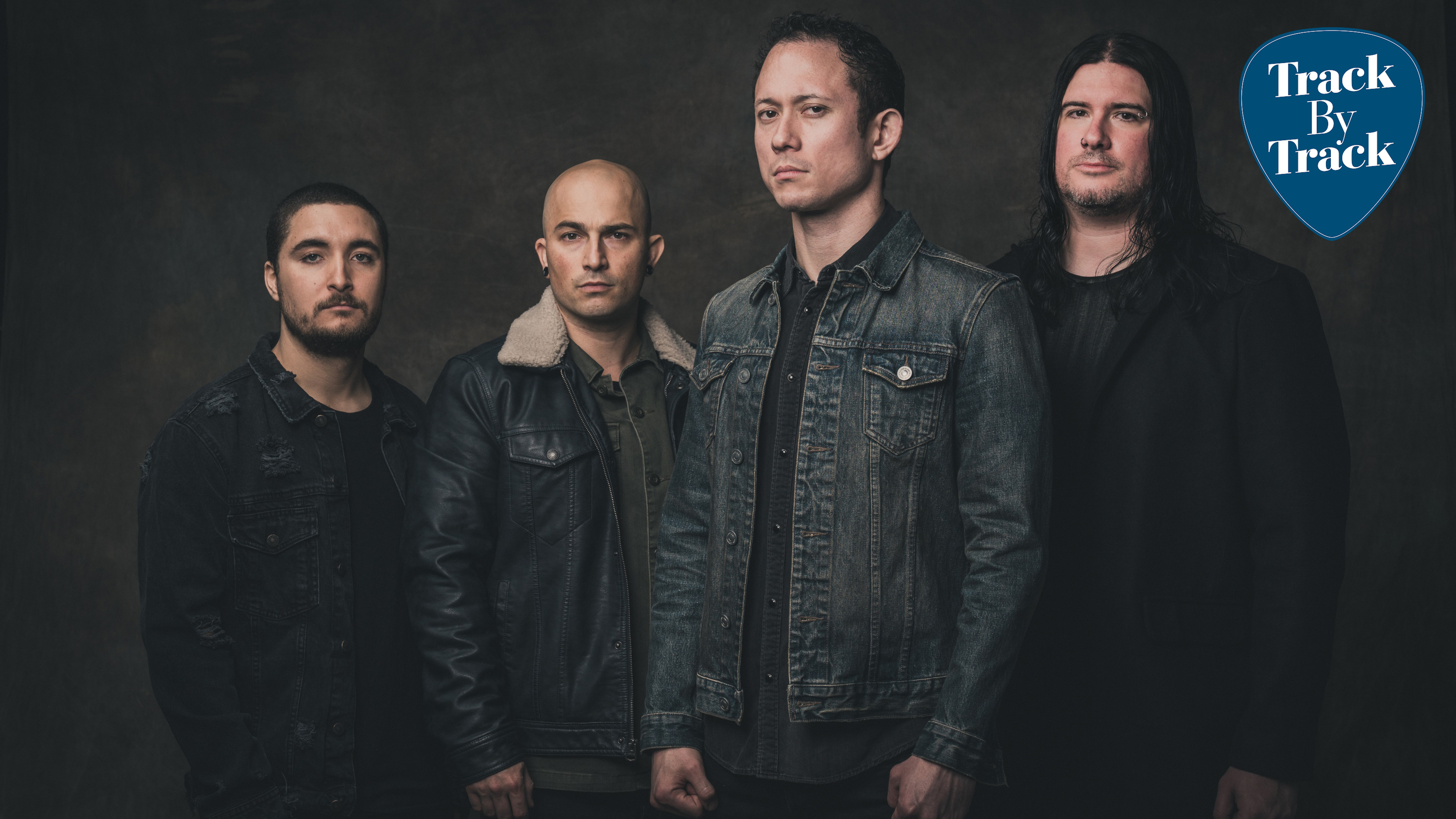
Now nine albums in, it’s easy to detect the unabashed confidence in Matt Heafy’s voice. The Trivium leader speaks as someone who was thrown headfirst into worldwide success at a young age, by his own admission lost a battle or two along the way and fought tooth and nail over the ensuing decade to get back to – and eventually surpass – where he once was. He charts his band’s rises, falls and rebirths much like character Jon Snow’s journey in HBO hit series Game Of Thrones...
“After 21 or so years, I feel like we’ve gotten pretty good at describing and exploring who we are,” the singer/guitarist tells MusicRadar. “Looking back to our experiences on [2005’s] Ascendancy – it was the only time and place in our history when we were on all the covers, getting all the awards and perfect scores for everything we did. Then for [2006’s] The Crusade there was a drastic shift. We had to figure out how to grow. Thankfully, the UK adopted us. The best metaphor is we are Jon Snow in the UK. We weren’t from there, but we were adopted there, then went up, down and back again.
"The Crusade was us doing the exact opposite of what we’d done before to see where we could go as a band. That led us to here. Our last record, The Sin And The Sentence, was the first time ever we’ve had new songs topping the live reactions to Ascendancy songs… which says a ton! I genuinely don’t think it was until Download 2019 when we managed to top Download 2005. You could say it’s a very introspective time in our career right now.”
“This time we said, ‘Anything goes!’ We didn’t think about what people might like or dislike"
Matt Heafy
That sense of introspection echoes deep within the songs recorded for album number nine, What The Dead Men Say. Instead of being too calculated and self-aware, weighing the success of past endeavours, the Floridian metal quartet opted for a no-holds-barred attitude to creativity. Taking the reins off and opening all avenues for exploration, says Matt, is the modus operandi that works best for this band…
“That’s where we are happiest, where Trivium fans are happiest and we make the best music we are capable of making,” he admits. “This time we said, ‘Anything goes!’ We didn’t think about what people might like or dislike. We didn’t want to stay in one lane or out of another, or do anything like that. It was just about the music that inspired and excited us.”

Today, Matt and co-guitarist Corey Beaulieu are talking us through the 10 tracks heard on their latest opus, looking deep inside their collective guitar assault. But before they do, there’s time for a quick run through their current rigs – both on stage and off – including the particulars of what Matt describes as his favourite guitar sound in the world right now…
"We went right in and started tracking guitars with our Kempers and a DI and re-amped later."
Corey Beaulieu
“We recorded guitars, bass, and vocals first, then drums at the end,” reveals Corey. “That was a brand new approach for us and we definitely liked how we could get right into tracking without the big setup time it takes with drums. We went right in and started tracking guitars with our Kempers and a DI and re-amped later.
Get the MusicRadar Newsletter
Want all the hottest music and gear news, reviews, deals, features and more, direct to your inbox? Sign up here.
"Rhythm guitars were recorded with a MKH Epiphone Les Paul through a Peavey Triple XXXII with an Ibanez TS-9 and ISP Decimator through a Mesa/Boogie cabinet. The melodies were done through a Peavey JSX and the same pedals and cab. My solos were recorded with my new signature Winterstorm signature through an EVH 5150III EL34 50-watt head and Matt’s were through an EVH 5150III Stealth and his signature guitar.
"For all of my solos I use an Eventide H3000 harmonizer with the multi pitch patch, though in the mix I believe [producer] Josh Wilbur used the Sound Toys plugin version of the same effect.”
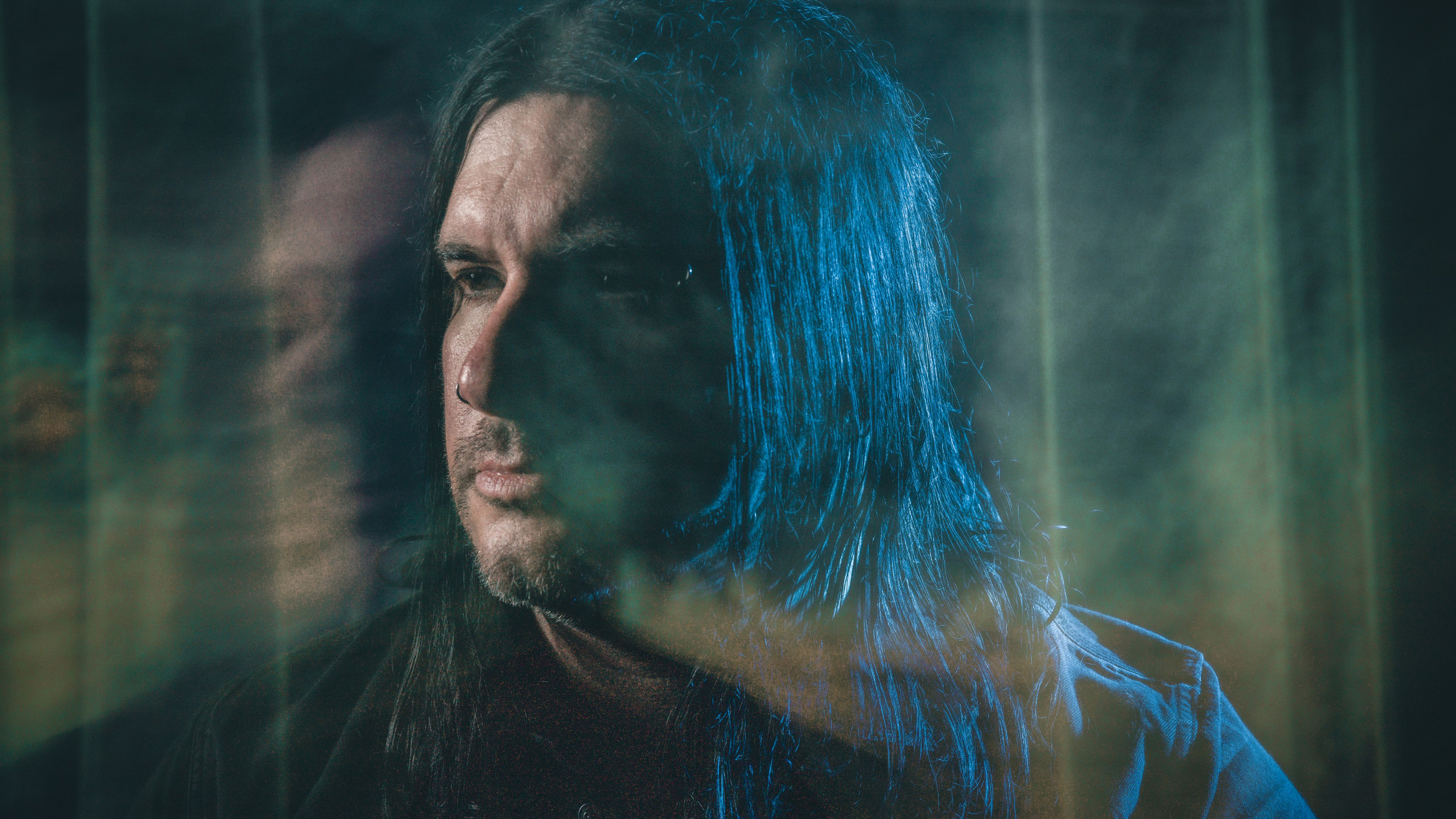
“The crazy thing about Peavey is that eight out of nine Trivium records have included some form of Peavey or 5150,” adds Matt. “Our first record and our latest record both have me going through a XXXII, which is a rare head for modern metal, through a Mesa cab with V30s. I generally prefer the Peavey-made 5150 stuff.
"I’ve been sticking with my MKH Epiphone since Vengeance Falls, though I’ve modded them with Fishman Fluence Moderns and Evertune bridges, which I especially like for recording because you don’t need to retune or intonate every 30 seconds.
"I use Dunlop 10-52s for six-string and 10-53 for seven-string, then I have my own signature Jazz III picks and Gruv Gear fretwrap.
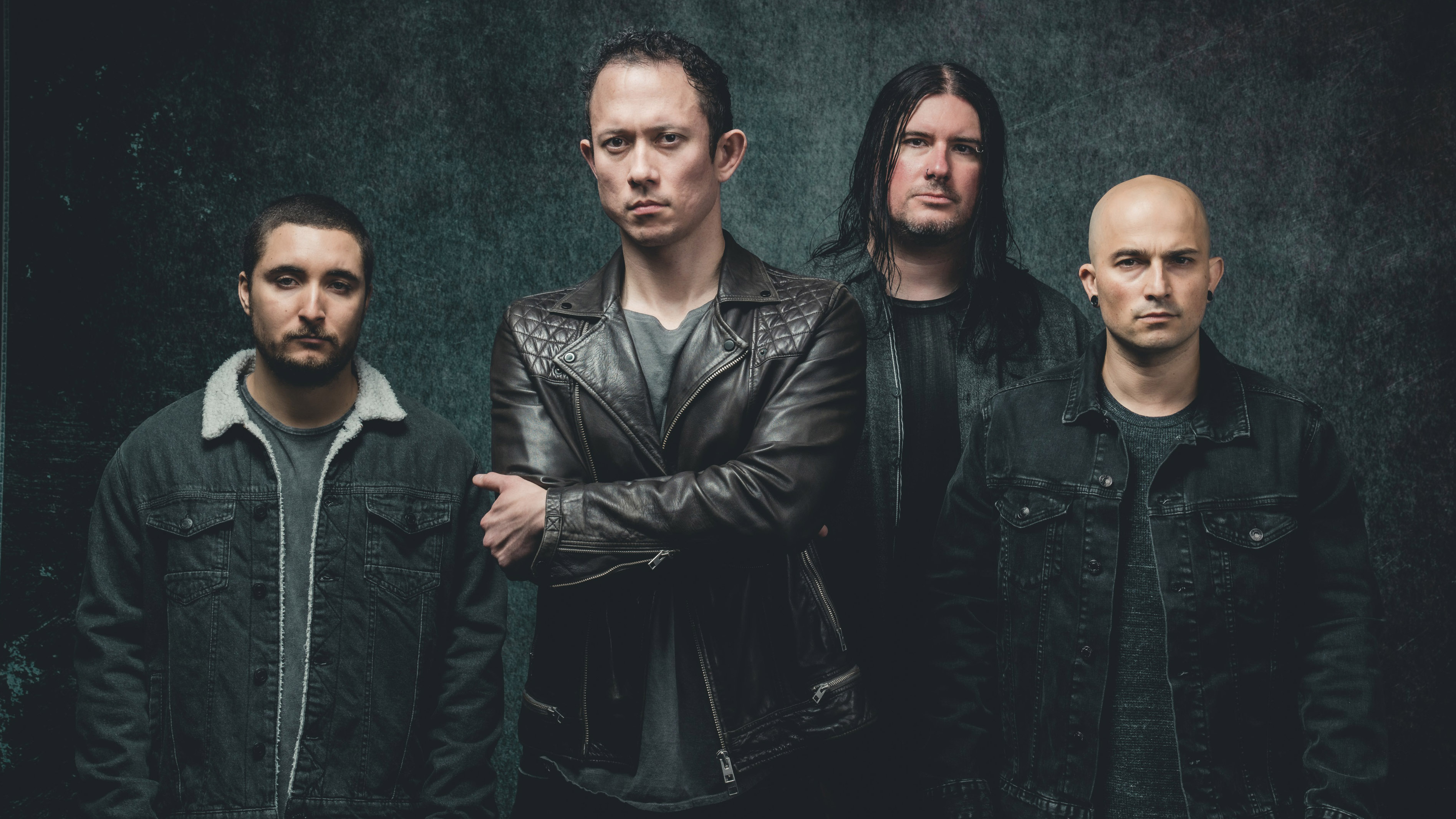
"As for my home rig, I play my Epiphone or Kiesel through an MXR Six-Band EQ into the Airis TS preamp through a Box Of Doom, which is made by a Dutch company who put a single speaker inside an isolated roadcase – basically one speaker handling the Wattage of an entire head – mine is a Celestion Redback 150. There are two SM57s for that to fake a stereo, that goes into an Apogee Element into my Mac, which has some high cut and low cut because my house is a 50s house and the electronics are kinda noisy. That’s my favourite guitar sound in the world right now!”
All that gear detail and we're not even into the track-by-track yet. Buckle up – we're going in!
1. IX
Matt: “I actually came up with this and the title track at the same time. There’s a big streamer called Shroud, one of the biggest in the world and a professional Counter-Strike player, and it turned out his favourite band were Trivium. So we’d never met in person but we got talking one day, and I said I’d be happy to write his theme song if he wanted. He was up for it, so I got making it on stream while he and a load of other people tuned in.
"So I came up with the initial themes, an almost baroque thing, originally for this Shroud Of Chaos song. It’s interesting how that turned into a proper Trivium song.
"For IX, we used an engineer called Darren Schneider and worked at a music college near my house. We used an old Telecaster for the main sound. I pictured a Western/futuristic dystopia and started playing these really loose twangy parts, then adding some acoustics. I like the idea of grabbing anything lying around in the studio… all the parts weren’t really written. We just played around with octave parts and adding chords. The experimenting can be so much fun. I love the part where all the guitars kick in. It ending up coming out like super evil baroque Christmas music ha ha!”
Corey: “Even before we really started writing for the record, when we were on tour our A&R guy at Roadrunner – Dave Rath – mentioned to us at a show that it would be really cool to have an intro to the album as something that we could play live, since most of our intros are just album intros that are on playback.
"We thought that was a cool idea and kept that in mind when writing the record. We wrote the title track and once we had that together, we knew that was gonna be the first track and just separated it into two pieces.”
2. What The Dead Men Say
"People obviously hear the Gojira scrape in there… I learned that from Joe Duplantier back when we brought them on tour in Europe around 2006"
Matt Heafy
Matt: “This one is super fun but quite tough. That bend on the G-string is key and it’s actually quite hard on an Evertune bridge, you have to do it twice as hard. People obviously hear the Gojira scrape in there… I learned that from Joe Duplantier back when we brought them on tour in Europe around 2006.
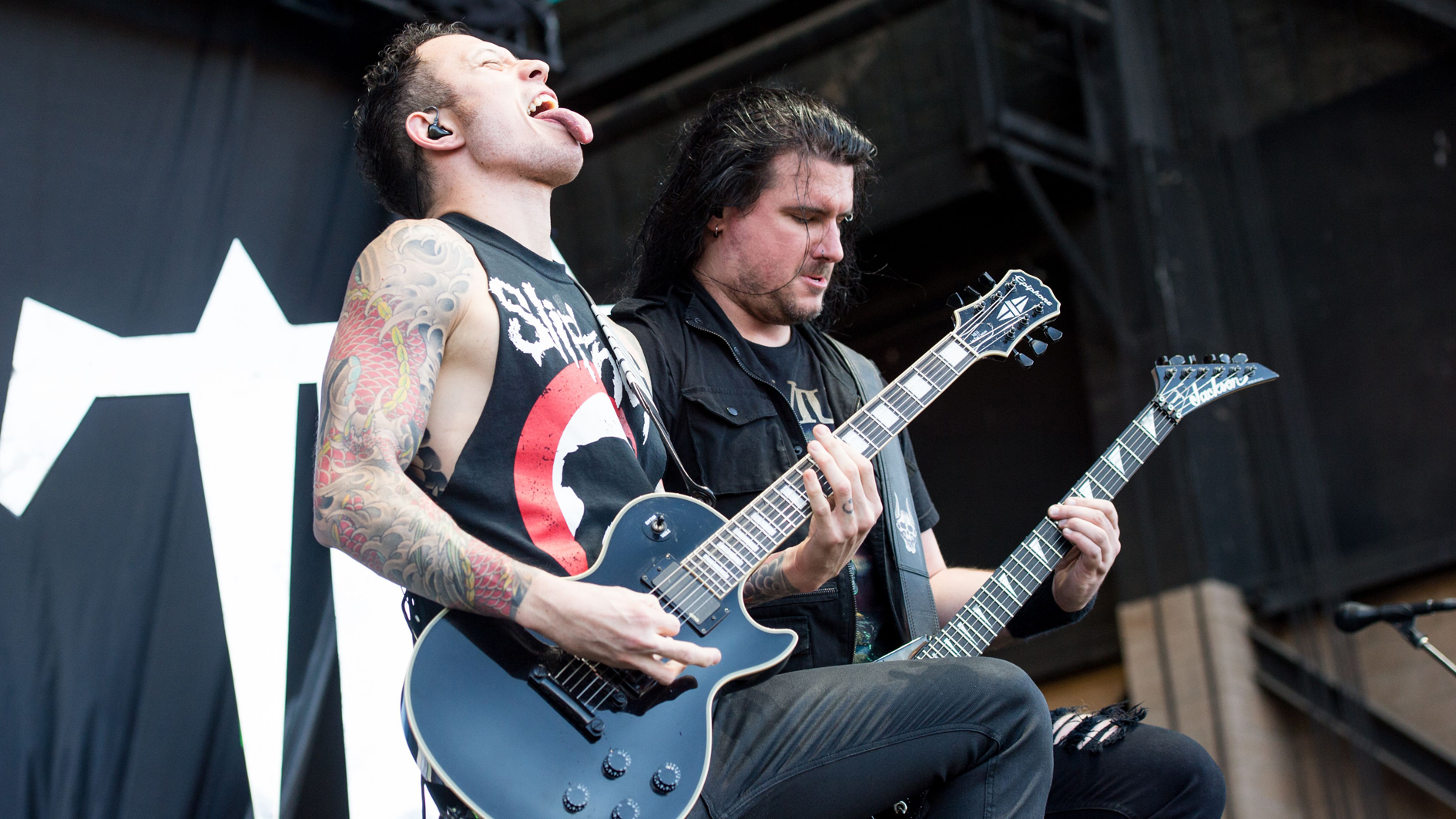
"Joe told me he got it from old death metal bands like Morbid Angel and taught me how to do it. I love hearing Gojira or Fit For An Autopsy use it. We’d done it on In Waves previously but wanted to put a bit more in there this time. The theme from IX reappears at a different tempo. I’m in love with the black metal part - it came from extreme bands but also gypsy jazz chords and scales. That in itself made the part really fun!”
Corey: “This song almost didn’t happen at first. Matt had these two different riffs which became the parts that make up the IX intro but we didn’t have anything else. Then after a night of thinking about it Paolo [Gregoletto, bass] remembered this demo he had written but erased from our demo Dropbox – we revisited the riffs and they just seemed to perfectly fit with the intro we had started.
"Then we all jammed and wrote the chorus on the spot which really sealed the deal for the song. We knew we wanted it to be the first song on the album to set the mood for what’s to come.”
3. Catastrophist
"I think it’s a nod to the Shogun era of Trivium where we had a little bit of everything on each song.”
Matt Heafy
Matt: “The main riff really reminded me of great Viking metal – early Amon Amarth and some of those great Swedish melodic death metal bands. So I brought in this guitar melody that was more Gothenburg, almost like old At The Gates.
"The harmony of that high Swedish melody is all major – it’s so bizarre and happy-sounding when you hear it alone. It constantly changes key, modes and feel but it all makes sense and works. I think it’s a nod to the Shogun era of Trivium where we had a little bit of everything on each song.”
Corey: “This was a song pretty early on that we knew was gonna turn into something special. From the original demo all riffs were there but once we got jamming we expanded on the verses by adding two different additional lead parts to make each verse keep building.
"Our fans seem to really enjoy it when we kinda throw some twists and turns into songs and this one we definitely just let the riffs flow. I really enjoy how the solo on this one came out, the way I started it was something when we first started jamming, coming into it from the previous part; just need that big guitar scream. This and all the solos on the record I wrote and recorded in about six or seven hours over a two-day span.”
4. Amongst The Shadows And The Stones
Matt: “This one is really fun, one of the most intense songs on the record. Corey came up with the original riff and had the title for it early on. I like how the chorus is a nod to Pillars Of Serpents off Ember To Inferno and the song In Waves in that it’s a screamed chorus.
"When he first showed me the riffs for the pre-chorus it was all muted. I suggested lifting the right hand and not muting it, kinda spinning the riff on its head, which I’d actually suggested before on Beyond Oblivion.
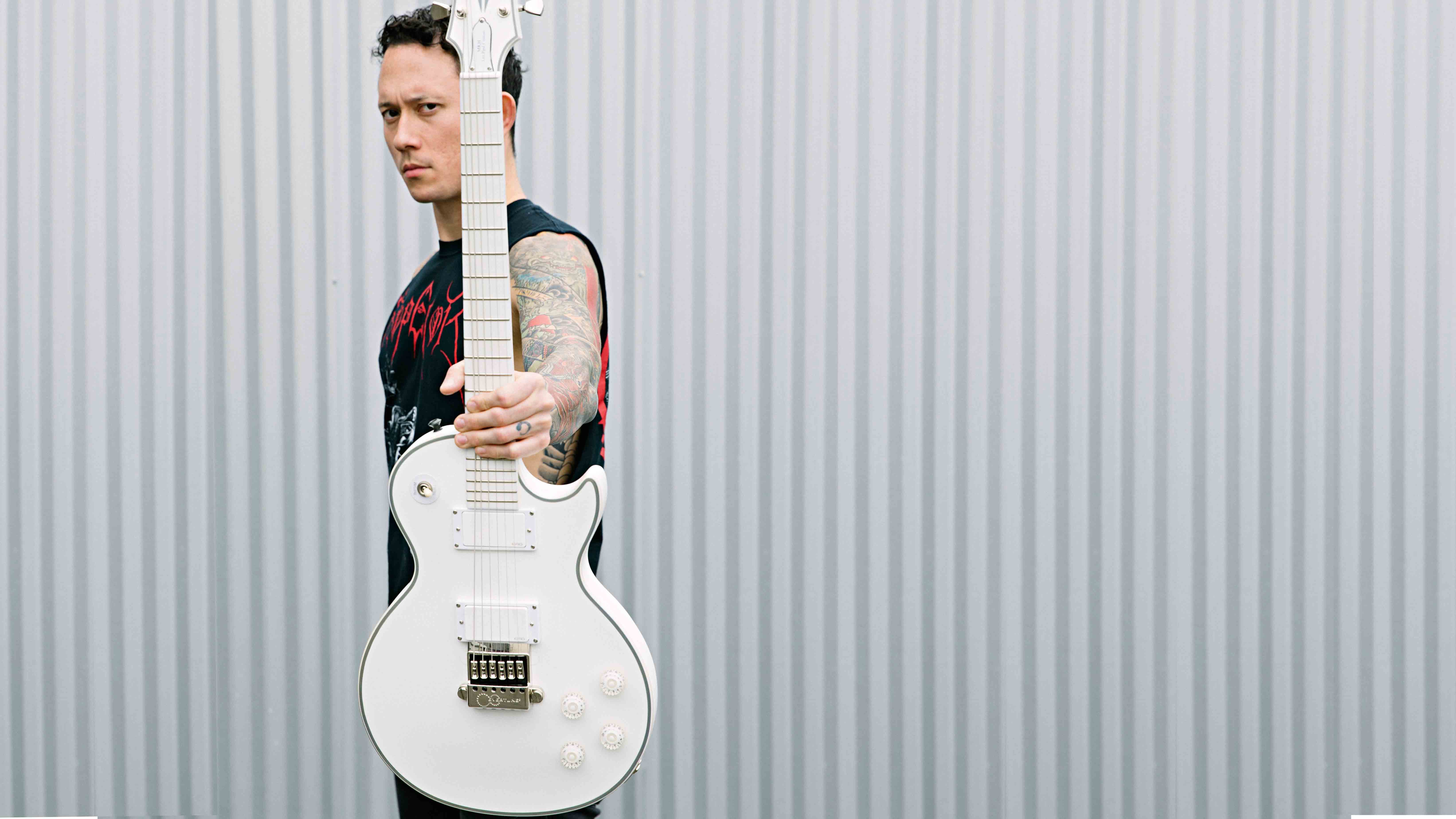
"I like the idea of taking traditional Trivium sounds and turning them around, mixing it all around with lots of back and forth. I luckily made sure I could play and sing it – I’ve done that on the last few records just to make sure I can actually pull it off before recording a single note. Vocal pre-production is key. We’d skipped it in the past and it really bit me in the ass when I would struggle to play and sing certain parts.”
Corey: “This is a really fun song to play with lots of ripping riffs. Also we don’t have many songs that start right off with vocals so it’s just in-your-face right from the start!
"This one also featured some group writing changes which is nothing new for us but when the outro fast part kicks off it gets my blood flowing every time. The solo on this one was definitely a little bit of a different one since it’s basically just a droning open note with no big chord changes – so this one you can hear how Matt and myself play off of the quick chord hits in the riff.
"With a lot of our albums there are little subtle themes that show up in a few songs and this one is one of a few that utilises the harmonic minor action.”
5. Bleed Into Me
Matt: “Hilariously and oddly, while being the simplest song on the record, this took the longest to finish and structure. We come up with super technical stuff very easily. But because this was so wide open, so full of space instead of complexity and riffs, we needed Josh to help us figure out the formula.
"When Paolo first showed us the song, it all made sense but it was the arrangement that needed consideration. It’s done in that drop half-step down seven-string tuning, so G sharp or A flat, we’ve used it on Dead And Gone. It’s as low as Trivium should go.

“Playing fast is great, but the detail’s got to be worked out”
"I’ve recently become obsessed with eight-strings, I have a very large collection. Paolo says they sound like tubas, justifiably so, and step on his range. So I keep the eight-strings at home. This is probably as low as we can go. I tried to write The Defiant in this tuning and it didn’t sound right…”
Corey: “In our rehearsal spot we have a recording setup to record us playing live together so when we get a new song down we just hit record and jam it out. This one came together so fast that we recorded it and then just didn’t really do anything with it before going into the studio.
"The chorus melody was the last thing written in the studio for me, which is a pretty straightforward lick that follows the chord progression. I was really happy with how the solo for this one came out, I really love playing to big open chords and harmonising melodic parts so this just was so ready for that big epic solo.”
6. The Defiant
"When we started jamming on it we switched to our drop six-string tuning and it just tightened up the song and gave it a more of an old school Ascendancy feel"
Corey Beaulieu
Matt: “So on this song I realised we needed to change the tuning. I came up with some of the riffs on stream [Matt has a successful channel on Twitch]. We were actually playing with Amon Amarth in Budapest, backstage in our room and Alex [Bent, drums] was playing air drums on his chest and double bassing on the floor. That’s actually how we started that song, on a live stream on Twitch in Hungary.
"It’s a fun song to play, and I feel like that fourth fret bass note seems to be a part of the best songs I’ve written. Honestly, that fourth fret in any tuning seems to really hit that Matt Heafy style of riffage, so songs like The Deceived, Ascendancy, To Burn The Eye, Caustic Are The Ties That Bind and a lot of Sever The Hand. I don’t know… it’s all about that fourth fret for me! It’s also the most Ascendancy / In Waves style track on the album, so I reckon old school fans will get excited by this one.”
Corey: “This was one of the three songs from our second writing session last August. Like he said, Matt wrote the main riffs live on Twitch while he was warming up!
"The song was originally written in the drop seven-string tuning I previously mentioned but the tempo and riffs didn’t really cater to that low of a tuning, so in rehearsal when we started jamming on it we switched to our drop six-string tuning and it just tightened up the song and gave it a more of an old school Ascendancy feel which we thought was pretty cool.
"This is another song we jammed out a new chorus with Paolo and Matt figuring out a chord progression and vocal line and myself adding in a lead melody.”
7. Sickness Unto You
"Corey can outshred me any day and I’m more of dad solo guy"
Matt Heafy
Matt: “It’s either very complex or extremely fun, because it involves every kind of picking – from the tremolo stuff in the prechorus to the 80s gallop of the verses, to the techy thrashy prog middle section.
The breakdown section feels very Trivium. It has everything! I think it’s going to be one of the most fun songs to learn… and actually every song on this album, except for Scattering The Ashes and Bleed Into Me, has endless riffs that somehow gel.
"I decided I wanted to solo on a couple of tracks. Corey can outshred me any day and I’m more of dad solo guy. But I wanted to throw something simple on there. I’m probably most happy with The Defiant’s solo… it was very shreddy dad pentatonic stuff ha ha!”
Corey: “This was the very first song we put together when starting the writing process for the album. We wanted something ripping to start with to really get the vibe going. This is a right hand workout song, besides the chorus it really doesn’t let up that much on the picking and especially the middle section where there’s not many notes being fretted, just lots of picking patterns.
Another fun riff that kinda came out of nowhere while we were jamming was the weird funky part after the crazy picking. We have this saying in the band ‘hive-mind writing’ where a riff is all three of us adding pieces and ideas to it.
"This is also another section we wanted Alex to get weird with his drumming and his other drumming influences definitely are highlighted in his performance. The solo section is another one I really like and how Matt’s and my solos go together, and it’s another one that utilises the harmonic minor arpeggios.”
8. Scattering The Ashes
"I couldn’t help adding in a little Chuck Schuldiner tinge at the end"
Corey Beaulieu
Matt: “It’s one of the simple ones, maybe not as wide open as Bleed Into Me, but there’s a direct lineage To Die In Your Arms. Corey came up with the title as well – he had to go back to Maine because his grandmother had just passed away and his parents said her final wish was to have her ashes scattered across the ocean. So he was there doing that and came up with the idea and music.
"Paolo wrote the rest of the lyrics and I added a few subtle changes just to simplify things. It’s also the current theme song to the Mortal Kombat 11 trailer which makes me so frickin’ stoked because I grew up with that. It also has Spawn making a cameo so that’s two things I grew up with right there. My mum made me a Sub-Zero costume when I was a kid, he was always my favourite character.”
Corey: “Last summer before we started our 2nd writing session I flew to Maine to spread a grandparent’s ashes with the whole family and this was the first thing I started working on.
"The basic elements of the song I’ve had for years but just missing something, so when I accidentally opened the Logic session looking for something else I jammed on it and the intro melody came out. I was like, “That’s what it was missing!” and with the vibe of the song the title just seemed like a perfect fit.
"The song is pretty straightforward and open, leaving space for big melodic vocals. The solo came out really fast in the studio and I love the melodic flow. I couldn’t help adding in a little Chuck Schuldiner (Death) tinge at the end for a The Sound Of Perseverance nod.”
9. Bending The Arc To Fear
Matt: “This probably has the weirdest structure, there isn’t much repetition in it which I think is very cool. That main riff Paolo wrote is weird. There’s something about Paolo riffs – like the middle section of Catastrophist – with weird bends that aren’t where you think they are.
"When he showed it to me, I was like, ‘That’s not the note!’ But there’s a subtle bend, that’s when it becomes a Paolo Trivium thing, on songs like Dead And Gone or Black. He loves those bizarre and unique details. This song is all about simplified down-picking but you really have to stay in the pocket. I think it’s a bit of a nod to the In Waves style, with maybe some of Vengeance Falls too.”
Corey: “I might be wrong but I think this may have been the last song we put together for the album. The demo was already a pretty heavy banger of a song but we expanded on the intro riff, it ended up becoming the new chorus and we added a new pre-chorus which I don’t think the demo had.
"We don’t do chromatic stuff very often but we managed to make it work well in this one. I think the solo was the last one in the studio I wrote because I was waiting to see if anything vocally was done differently, so I knew where to put the solo. The middle section features another open note riff which aren’t really my favourites to solo over, so I opted for more of a riff-based approach to add in on the section repeat then go full solo which I did on the melodic riff that comes after.”
10. The Ones We Leave Behind
"I will do things on purpose to nod at moments across our history"
Matt Heafy
Matt: “This one is lyrically incredible. I encourage everyone to read the lyrics and find their own definitions first and maybe we’ll give our own answers later. I feel like this one, Catastrophist and the title track all live in a similar realm.
"It’s a mix of all sorts of Trivium sounds and riffs. It’s where The Sin And The Sentenced left off. I love that it starts with the drum fill and wraps up what we’ve done previously, like an Easter Egg. I will do things on purpose to nod at moments across our history.
"It’s a blast to play and I love that ending section, which we came up with in the jam room. I recommend that all bands do that, once you have a couple of riffs, you need to rehearse together – even if you’re singing gibberish – just to let it flow and vibe. Bring it back to that place before your band had fans, when you were only writing for yourself.”

"Out of all the songs on the album, this one changed the most from the demo"
Corey Beaulieu
Corey: “Out of all the songs on the album, this one changed the most from the demo. The original demo I wrote as a melodic semi-ballad type of song; most of the parts didn’t change but the vibe sure did.
"When we started to jam the song I remember Paolo saying the parts are cool but it’s just missing something, so we kept our parts the same and told Alex to speed the song up a lot and it ended up turning into a double bass fest.
"With the speed being cranked up, we added in the pre-chorus blast riff which really transformed the song into a full on shredder. I love riffs that do one thing and there’s a moving bass line underneath it to give the section a melodic movement while keeping the riff heavy.
"The solo was the first one I took on for the record as my get-the-blood-flowing solo so it probably took me a little longer to write and record since I hadn’t written a solo in a while.
"I really love the outro to this one. When we were doing pre-pro the day before the start of recording, we knew this one was gonna be the last song on the record, but felt like it was missing something to really end the album.
"We took the middle section theme and turned the riff into a harmonized lead part and once we started playing it, we knew we had what the song and the album needed to really end it properly!”
Trivium's What The Dead Men Say is out now on Roadrunner Records. For more info visit trivium.org
Amit has been writing for titles like Total Guitar, MusicRadar and Guitar World for over a decade and counts Richie Kotzen, Guthrie Govan and Jeff Beck among his primary influences. He's interviewed everyone from Ozzy Osbourne and Lemmy to Slash and Jimmy Page, and once even traded solos with a member of Slayer on a track released internationally. As a session guitarist, he's played alongside members of Judas Priest and Uriah Heep in London ensemble Metalworks, as well as handling lead guitars for legends like Glen Matlock (Sex Pistols, The Faces) and Stu Hamm (Steve Vai, Joe Satriani, G3).
“Every note counts and fits perfectly”: Kirk Hammett names his best Metallica solo – and no, it’s not One or Master Of Puppets
“I can write anything... Just tell me what you want. You want death metal in C? Okay, here it is. A little country and western? Reggae, blues, whatever”: Yngwie Malmsteen on classical epiphanies, modern art and why he embraces the cliff edge










